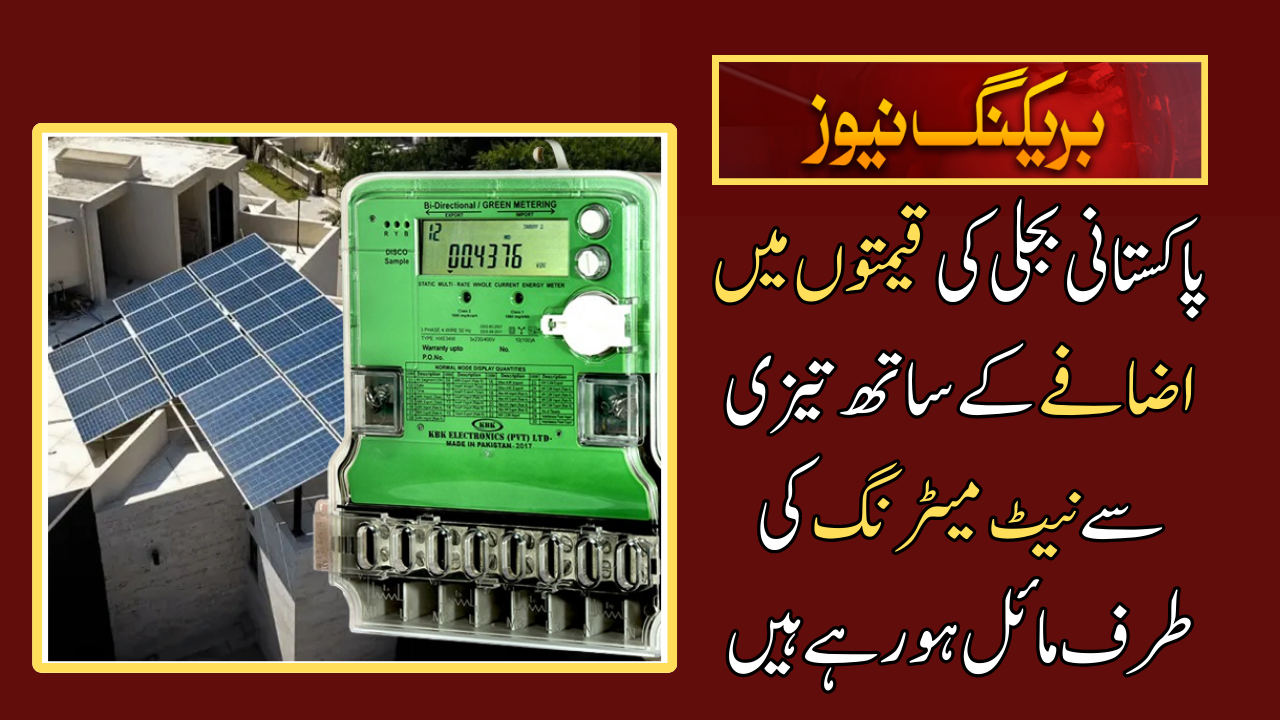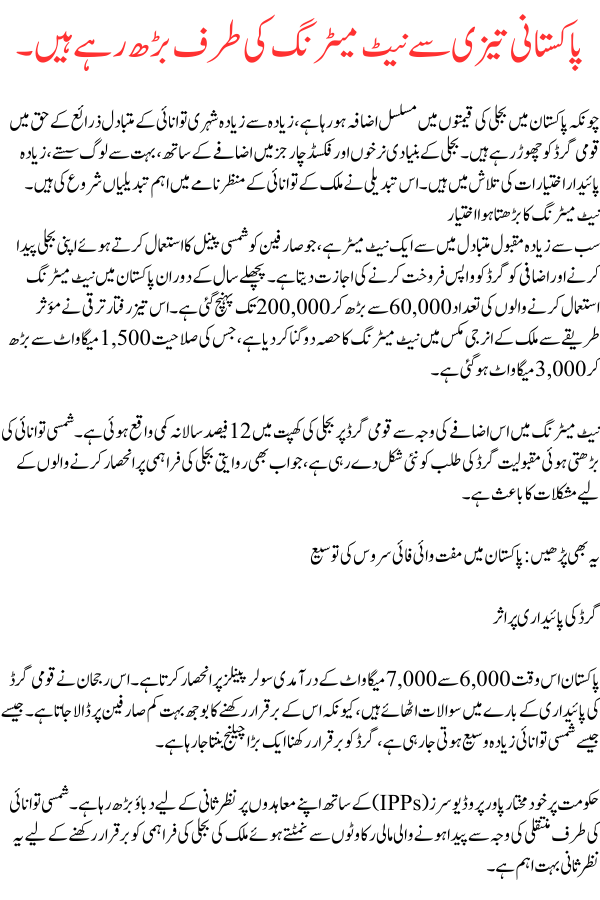Pakistanis increasingly shift to net metering
As Pakistan’s electricity prices continue to surge, more and more citizens are abandoning the national grid in favor of alternative energy sources. With the rise in basic electricity tariffs and fixed charges, many people are looking for cheaper, more sustainable options. This shift has triggered significant changes in the country’s energy landscape.
Growing Adoption of Net Metering
One of the most popular alternatives is net meter, which allows consumers to produce their electricity using solar panels and sell the excess back to the grid. Over the last year, the number of net metering users in Pakistan has skyrocketed from 60,000 to 200,000. This rapid growth has effectively doubled net metering’s share in the country’s energy mix, with capacity expanding from 1,500 MW to 3,000 MW.
This surge in net metering has led to a 12% annual reduction in electricity consumption on the national grid. The growing popularity of solar energy is reshaping grid demand, causing difficulties for those still dependent on traditional power supplies.
Also Read: Free Wi-Fi Service Expanded in Pakistan
Impact on Grid Sustainability
Pakistan currently relies on 6,000 to 7,000 MW of imported solar panels. This trend has raised questions about the sustainability of the national grid, as fewer consumers are left to shoulder the burden of maintaining it. As solar energy becomes more widespread, maintaining the grid is becoming a bigger challenge.
The government is under increasing pressure to revise its agreements with independent power producers (IPPs). These revisions are crucial to maintaining the country’s power supply while dealing with the financial hurdles caused by the shift to solar energy.
Also Read: Punjab Government Announces Solar Panel Program
Business Opportunities and Challenges
This switch to solar energy has also created a wealth of new business opportunities. The increased demand for solar systems has sparked job creation in the solar industry. However, the rise of reverse metering, where excess energy is sold back to the grid, presents new technical and operational challenges.
As more people turn to solar, they often lack the necessary knowledge to choose the right system for their needs. Many rely on experts for guidance before selecting a solar provider. The market is filled with diverse options, but the complexity of choices can make the decision-making process overwhelming.
Also Read: CM Punjab Launches E-Bike Scheme
Government’s Role in Supporting Solar Energy
The government’s role is critical in managing this energy transition. By renegotiating IPP contracts and supporting solar adoption, the authorities can ensure the continued stability of the national power grid. At the same time, promoting local manufacturing of solar panels and components could significantly reduce reliance on imports.
As solar energy gains momentum, it’s clear that both businesses and the government must adapt quickly to keep up with the changing energy landscape.
Also Read: How to Check Payments of Ehsaas Program
Conclusion
The Pakistanis increasing shift to metering is transforming Pakistan’s energy sector. With growing adoption and its impact on the national grid, the country faces both new challenges and opportunities. Sustainable policies and consumer awareness will be key to navigating this transition successfully.
Read more: https://ehsaas8171bispnews.com/
FAQs:
1. What is Pakistanis increasingly shift to metering? Net metering allows individuals to generate their electricity using solar panels and sell any excess energy back to the national grid.
2. How many people in Pakistan are using solar energy? As of now, approximately 200,000 people in Pakistan use solar energy with net meter.
3. How does solar energy affect the national grid? As more people switch to solar energy, it reduces the demand on the national grid, creating sustainability challenges for the remaining grid users.
4. What is reverse metering? Reverse metering is a system where the extra energy generated by solar panels is sold back to the grid, reducing electricity costs for consumers.
5. Why is the government renegotiating agreements with IPPs? The government is considering revisions to these contracts to ensure grid stability and address financial issues caused by the shift to solar energy.
6. How much solar power is imported into Pakistan? Currently, Pakistan uses 6,000 to 7,000 MW of imported solar panels.
7. What challenges do solar energy users face? Many users struggle with limited knowledge about the best systems and providers, making the decision process more difficult.
8. How does solar energy help the environment? Solar energy reduces reliance on fossil fuels, lowering carbon emissions and promoting a cleaner environment.
9. Are there new job opportunities in the solar sector? Yes, the growing demand for solar energy has created new business and employment opportunities in the solar industry.
10. How can I apply for solar panel installations? You can consult with certified solar providers in your area and explore government schemes for solar panel installations.
Read more: https://ehsaas8171bispnews.com/


